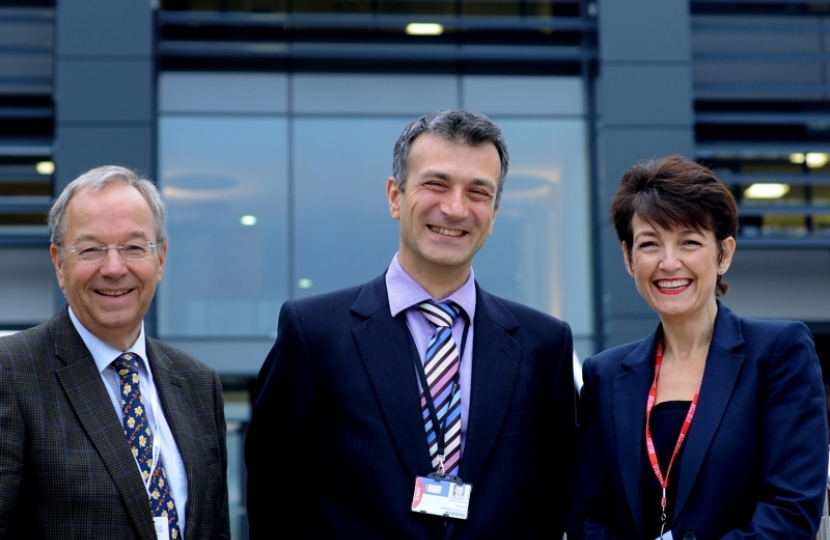
Last Tuesday, the Government unveiled its new Industrial Strategy, a highly anticipated event. However, it has to be admitted the news was somewhat overshadowed by another highly anticipated announcement: the engagement of Prince Harry to Meghan Markle.
This strategy, a roadmap for our future economy, sets out how our industrial and business landscape is changing, powered by new technologies transforming the way we live and work. The UK is poised to lead in these changes; boasting world class universities excelling in research and education, and respected institutions with high business standards.
For our own region, we play a large part in driving these strengths; home to the leading research centre of Cambridge University as well as vast skills and technological innovation companies across the region, specialising in science, bio-science and aviation. So what then does this new Industrial Strategy mean for East Anglia?
When the Secretary of State for Business, Energy and the Industrial Strategy introduced the new Industrial Strategy, he spoke of the need to “…do more to make the most of our untapped potential”. For a country that is performing well but has remarkably low levels of productivity output, it is right we look to the skills already available, as well as to those still to be explored.
The key aspects of the Industrial Strategy consider the role of ideas, people, infrastructure, business and places or regional strengths. Within these, the East is well represented in the Strategy, with our specialist businesses as well as our skills potential.
As an example, an increase in research and development (R&D) funding across the country, as well as to increase the rate of R&D tax credit to 12%, is a real boost for the cluster of high tech small and medium sized businesses in the south of the region as well as those spread around my own Bury St Edmunds constituency.
Botht the Budget and the Industrial Strategy acknowledge that is that it is in fact our smaller and medium businesses which drive our national economy, with nearly 5.5 million SME’s responsible for nearly half of all private sector jobs. Boosting R&D funding and incentives will allow these businesses which, by their nature, are smaller but more flexible, to effect change and drive forward industrial progress and promote economic growth.
Where the Industrial Strategy identifies progress is around the skills agenda, something which is especially pertinent to the east. For instance, whilst our region has employment 4% higher than the national average, the working population are below the average for higher level skills.
So far, we have made excellent progress in delivering 237,900 apprenticeships across East Anglia since 2010, half of which specialise in skilled industries like technology and engineering. We must harness this capacity and continue to push forward the delivery of skilled employment.
This focus on skills is something which the MPs of this region have been working hard to promote and drive forward within the locality, as well as part of the wider aspirations of the UK economy. For instance, working closely with businesses and the education leaders, we are throwing our weight behind plans for an Institute of Technology in the East.
The Institute of Technology would be led by West Suffolk College in my Bury St Edmunds constituency and an ambitious new plan which would form a network of skills, opportunities and growth by working with businesses to develop the future workforce.
This exciting blueprint showcases the potential of new opportunities across our region; with the prospect of unlocking the skills and economic vitality of our region and putting us firmly on the map.
The Industrial Strategy recognises initiatives such as these. Working together with business leaders and local providers, it is now up to us to deliver upon this promise of the East.
Published in the East Anglian Daily Times